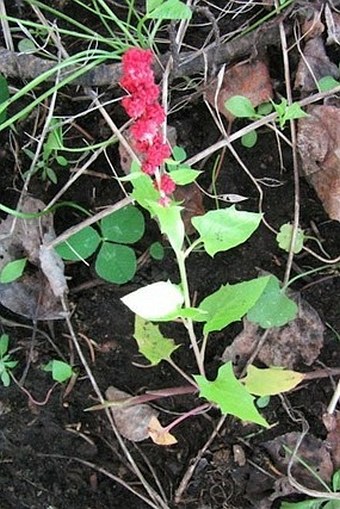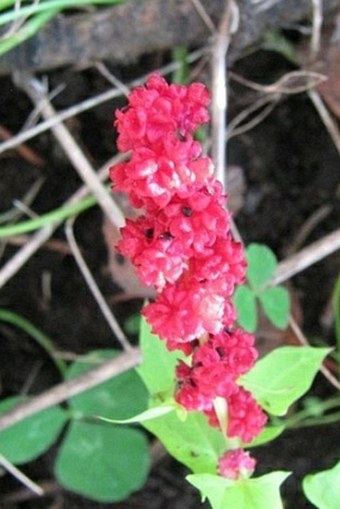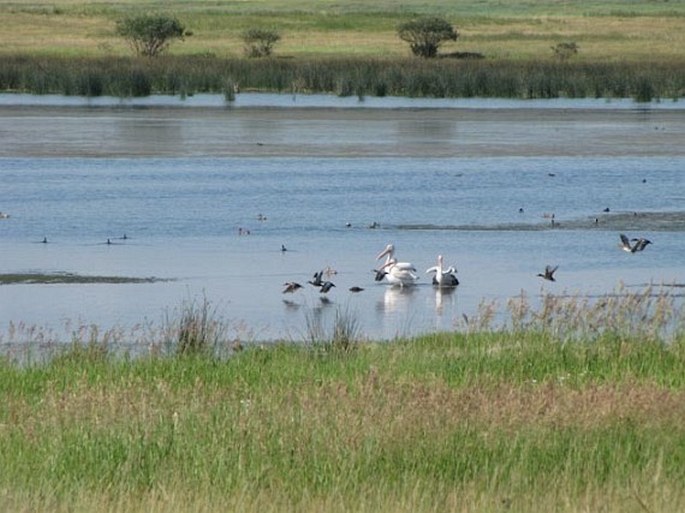Syn.: Blitum capitatum L., Morocarpus capitatus (L.) Scop.
Family: Amaranthaceae Juss.


Distribution: Species of North America – from Alaska and Northwest Territory through Canada to northern California and New Mexico, missing in the southeast USA. Naturalized elsewhere in temperate regions.
Ecology: Dry and well drained to rich and moist sites, often of disturbed ground or in burned areas; foothills to sub-alpine. Flowers in June to August.
Description: Annual herb with slender taproots. The stem is erect, 10–50 cm tall, usually branched, fleshy, yellowish green, hairless. Leaves alternate, broadly arrow-shaped, 2–10 cm long, toothless or wavy-toothed, slender stalked. Flowers deep red, pulpy, tiny, with 3–5 fleshy sepals and no petals; many flowers in round 1–1.5 cm heads from leaf axils, often forming interrupted spikes on upper stem. Fruits are black, lens–shaped seeds about 1 mm small, enclosed in red, fleshy calyx.
Usage: Young plants can be eaten raw or cooked. Red fleshy flowers are also edible and make refreshing trail-side refreshment. The plants are high in calcium, protein and vitamins A, B1, B2, B6 and C but should be eaten in moderation due to its high content of oxalates. Native Americans used the red flower clusters to make ink to dye porcupine quills, clothes, hides, basket materials and even their own skin. The colour is bright red a t first, later it darkens to purple or maroon.
Threat and protection: It is considered endangered in state of Ohio.

These images were taken in Canada, Alberta, Frank Lake (July 2012).


